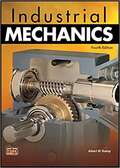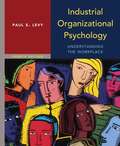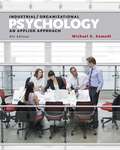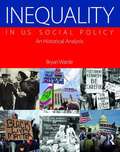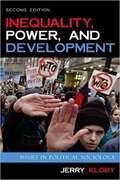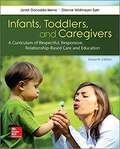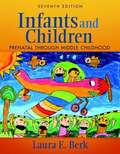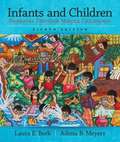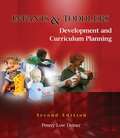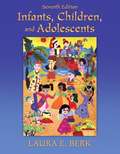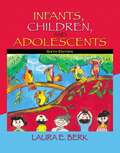- Table View
- List View
Indiana Reveal Math®, Grade K, Volume 1
by Ralph Connelly Annie Fetter Linda GojakNIMAC-sourced textbook
Indiana Reveal Math®, Grade K, Volume 2
by Ralph Connelly Annie Fetter Linda GojakNIMAC-sourced textbook
Indiana Reveal Math®: Volume 2
by Ralph Connelly Annie Fetter Linda GojakNIMAC-sourced textbook <P<>Grade 5
Indiana The United States, Early Years [Grade 5]
by Dinah Zike James A. Banks Kevin P. Colleary Linda Greenow Walter C. Parker Emily M. SchellNIMAC-sourced textbook
Indiana Timelinks: People, Places and Culture in Europe and the Americas [Grade 6]
by Dinah Zike James A. Banks Kevin P. Colleary Linda Greenow Walter C. Parker Emily M. SchellNIMAC-sourced textbook
Individual Rights: The Blessings of Liberty
by Perfection LearningWHAT PREVENTS TYRANNY?<P> The question above is the essential question that you will consider as you read this book. The selections, activities, and organization of the book will lead you to think critically about this question and to develop a deeper understanding of how effectively the Constitution, Bill of Flights, and other amendments guard individual liberties.<P> Included are sections on:<P> * How would society be different without the First Amendment? <P> * How well does federalism protect individual rights? <P> * Why are suspects' rights important?<P> * Thinking on Your Own
Indiya Porulaathaaram (Indian Economy) 11th Standard - Tamilnadu Board
by Training State Council of Educational ResearchIndiya Porulaathaaram (Indian Economy) Textbook for the 11th Standard Students, preparing for Tamil Nadu State Board Exam.
Indoor Fun (Fountas & Pinnell Classroom, Guided Reading Grade 1)
by Barbara LevadiNIMAC-sourced textbook
Industrial Fluid Power: Volume 1
by Charles HedgesBasic Textbook on Hydraulics, Pneumatics and Vacuum. Study Text, Circuit Diagrams, Design Data Tables and Troubleshooting arranged for the Beginning Student.
Industrial Maintenance and Mechatronics: Lab Workbook
by Shawn A. BalleeThe Lab Workbook for Industrial Maintenance and Mechatronics combines review activities and practical applications that relate to the content of the textbook chapters. Questions designed to reinforce the textbook content help students review their understanding of the terms, concepts, theories, and procedures presented in each chapter. Hands-on lab activities provide an opportunity to apply and extend knowledge gained from the textbook chapters. These lab activities also help to prepare students for the hands-on skills assessment required to achieve a NIMS Industrial Technology Maintenance Level 1 credential.
Industrial Mechanics
by Albert W. KempIndustrial Mechanics is a comprehensive introduction to industrial mechanical principles, components, and circuits. This textbook provides information on safety and system efficiency and is designed as a training resource for mechanics, technicians, maintenance personnel, and individuals in industrial training programs. <p><p>This edition includes content on test tool safety and fastening methods, as well as expanded content on electrical safety, electrical applications, hydraulic component testing, and hydraulic system troubleshooting.
Industrial Organizational Psychology: Understanding the Workplace (Fourth Edition)
by Paul LevyThe new fourth edition introduces students to the psychological factors active in the workplace, including the psychology of the workforce, employee health and well-being, and various dynamics of work interaction. It includes recent studies focusing on new technologies, new work habits, and newly emergent organizational structures.
Industrial Revolution (Kids Discover Social Studies)
by Houghton Mifflin HarcourtNIMAC-sourced textbook
Industrial/Organizational Psychology: An Applied Approach
by Michael G. AamodtStriking a balance between research, theory, and application, the eighth edition of INDUSTRIAL/ORGANIZATIONAL PSYCHOLOGY: AN APPLIED APPROACH helps readers discover the relevance of industrial/organizational psychology in everyday life through practical application. Readers analyze topics such as resume writing, interview survival, job description authoring, performance appraisal, employment law, job satisfaction, work motivation, and leadership. Humor, case studies, real-world examples, and a friendly writing style make the book both readable and interesting. Numerous charts, tables, flowcharts, and exercises help readers conceptualize complex issues.
Inequality In US Social Policy: An Historic Analysis
by Bryan WardeIn Inequality in US Social Policy: An Historic Analysis, Bryan Warde illuminates the pervasive and powerful role that social inequality based on race and ethnicity, gender, immigration status, sexual orientation, class, and disability plays and has historically played in informing social policy. Using critical race theory and other structural oppression theoretical frameworks, this book examines social inequalities as they relate to social welfare, education, housing, employment, health care, and child welfare, immigration, and criminal justice. This book will help social work students better understand the origins of inequalities that their clients face.
Inequality Power and Development: The Task of Sociology
by Jerry KlobyThe growth of transnational corporations, the dominance of worldwide financial and political institutions, and the extensive influence of media that are nearly monopolized by corporate interests are key factors shaping our global society today. What are the consequences of these developments for the great masses of people throughout the world? One clearly emerging pattern is the growing disparity between the developed nations and the rest of the world.In this excellent analysis of power distribution and its effects, sociologist Jerry Kloby presents data on the increase of wealth and income inequality, and argues that many of the policies pursued by the developed nations and international corporations have led to a deterioration of living standards and the environment in many parts of the world. He also discusses a power shift in the United States that has weakened the working class.One of the great strengths of Kloby's work is the comprehensive picture he creates from many diverse events and trends―local and international, contemporary and historical. The many graphs and tables containing supporting data add a visual element that guides the reader to a clear understanding of the complex forces underlying contemporary developments. He also clearly explains the meaning and relevance of such sophisticated but important terms as neoliberalism, dependency, civil society, and social capital.This fully revised and updated edition will have enduring value for students and scholars of sociology, political science, economics, and international relations.
Infant Development: A Topical Approach (Second Edition)
by Alan FogelInfant Development: A Topical Approach is a text for an infant development course that is organized around topics. This approach allows for coherent organization within domains such as sensorimotor, cognitive and brain, emotional, social and communicative development in infancy. In addition, there are chapters that cover research methods, theory, prenatal development, childbirth, health and risk, and family and culture, and the long-term effects of the infancy period.
Infants Toddlers and Caregivers
by Janet Gonzalez-Mena Dianne Widmeyer EyerInfants, Toddlers, and Caregivers is an ideal introduction to care and education in the first three years of life, featuring a respectful approach inspired by field pioneers Magda Gerber and Dr. Emmi Pikler. The program provides practical information based on theoretical and research foundations that students can implement in a variety of infant and toddler settings. With the impacts of school readiness and technology in early childhood education today, this program focuses on the value of free play, the development of self-reliance, and the importance of responsive, respectful interactions. The Connect course for this offering includes SmartBook, an adaptive reading and study experience which guides students to master, recall, and apply key concepts while providing automatically-graded assessments.
Infants and Children: Prenatal through Middle Childhood
by Laura E. BerkBerk's signature storytelling style invites students to actively learn beside the text's "characters" who share their influential experiences and developmental milestones. Students are provided with an exceptionally clear and coherent understanding of child development, emphasizing the interrelatedness of all domains--physical, cognitive, emotional, and social--throughout the text narrative and in special features. Focusing on education and social policy as critical pieces of the dynamic system in which the child develops, Berk pays meticulous attention to the most recent scholarship in the field. Berk helps students connect their learning to their personal and professional areas of interest and their future pursuits as parents, educators, heath care providers, counselors, social workers, and researchers.
Infants and Children: Prenatal through Middle Childhood, Eighth Edition
by Laura E. Berk Adena B. MeyersA best-selling, chronologically organized child development text, Berk and Meyers’ Infants and Children: Prenatal Through Middle Childhood is relied on in classrooms worldwide for its clear, engaging writing style, exceptional multicultural and cross-cultural focus, rich examples, and long-standing commitment to presenting the most up-to-date scholarship while also offering students research-based, practical applications that they can relate to their personal and professional lives. The authors takes an integrated approach to presenting development in the physical, cognitive, emotional, and social domains; emphasize the complex interchanges between heredity and environment; and provide exceptional attention to culture.
Infants and Toddlers: Development and Curriculum Planning (2nd Edition)
by Penny DeinerThe revised text is evidence based, up to date and comprehensive with rich features, and new Photos and line drawings to illustrate points. It provides information on inclusive curriculum planning and uses a domain specific approach without losing sight of the whole child. It challenges students by looking at and analyzing the issues in the field, and supplies the framework to use knowledge within professional practice.
Infants, Children, and Adolescents (7th edition)
by Laura E. BerkBerk's signature storytelling style invites students to actively learn beside the text's "characters" who share their influential experiences and developmental milestones. Students are provided with an exceptionally clear and coherent understanding of child development, emphasizing the interrelatedness of all domains--physical, cognitive, emotional, and social--throughout the text narrative and in special features. Focusing on education and social policy as critical pieces of the dynamic system in which the child develops, Berk pays meticulous attention to the most recent scholarship in the field. Berk helps students connect their learning to their personal and professional areas of interest and their future pursuits as parents, educators, heath care providers, counselors, social workers, and researchers.
Infants, Children, and Adolescents (Sixth Edition)
by Laura E. BerkBerk’s signature storytelling style invites students to actively learn beside the text’s “characters” who share their influential experiences and developmental milestones. Students are provided with an exceptionally clear and coherent understanding of child development, emphasizing the interrelatedness of all domains—physical, cognitive, emotional, and social—throughout the text narrative and in special features. Focusing on education and social policy as critical pieces of the dynamic system in which the child develops, Berk pays meticulous attention to the most recent scholarship in the field. Berk helps students connect their learning to their personal and professional areas of interest and their future pursuits as parents, educators, heath care providers, social workers, and researchers.


